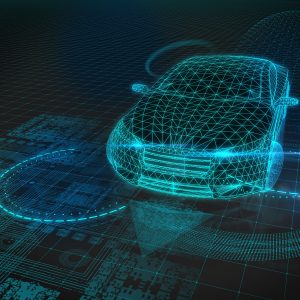
Electric Drive is not just a buzz-word anymore; concern for the environment has compelled governments and authorities to deploy regulations to curb vehicles’ carbon footprints and even, in some countries, impose hefty fines on OEMs if they don’t achieve the permissible limit of CO2 for their fleets. In today’s world, environmental motives are shaping the future of mobility and leading automotive manufacturers towards green, clean and efficient cars. The testimony to the fact is that “by 2040, more than half of all new cars could be electric”1.
Bringing the next-generation cars to the road requires the OEM front-runners and automotive innovators to reinvent the way we engineer automobiles. Mainly due to huge R&D investments and electric powertrain costs, they strive to do so as efficiently as possible. The best way to gain insights and tackle such challenges is by simulation.
Simulation lets us predict a product’s real-world physical behavior by virtual prototyping where one can subject designs to real-world conditions to enhance product quality while reducing prototyping and physical testing costs.
The challenges in the development of electric-drives are however intrinsically multi-physical in nature. The electric-drive brings more electronics and software to the table than mechanical components. Moreover, understanding the interplay of thermal and mechanical requirements, durability, electromagnetic behavior, noise and lubrication are of utmost importance.
All these physical domains are interwoven such that improvement in one of the areas often affects the performance in another, thereby inevitably involving optimization of multiple disciplines. With this scenario, it is crucial to have a multi-domain data exchange at the early system design concept.
Swift and precise system-level analysis and elaborate constituent level analysis allows engineering teams to assess the interactions and inter-dependencies within  complex electric drive systems. Embracing a holistic approach enables the exploitation of potential trade-offs in these co-dependent systems to reduce design iterations and accelerate innovation.
complex electric drive systems. Embracing a holistic approach enables the exploitation of potential trade-offs in these co-dependent systems to reduce design iterations and accelerate innovation.
The electric-drive development process entails some key challenges where multiphysics simulation could be a boon
The tonal noises that are perceived as unpleasant by passengers are no longer masked when the electric machine replaces the internal combustion engine. Therefore it is important for engineers to understand and alleviate the sources of noise & vibration in this new system, to ensure passengers’ acoustic comfort.
Thermal management is another significant challenge during electric-drive development. The heat generated during operations has a prevailing effect on the performance of the electric-drives. Thus, efficient heat regulation for both the electric machine and power electronics is critical to the precise functioning of electric-drives.
Lubrication also plays a vital role in electric-drive development, as the oil-induced drag torque on the rotating components is the leading contributor to the overall losses. Therefore, to enhance the range with similar battery capacity, the oil level in the electric-drives needs to be optimized.
With the customer’s ever-increasing desire for a good driving experience, the prime focus for the electric-drive is motor efficiency and drive range performance To adopt electric vehicles widely, customers expect at least the same level of performance and comfort as conventional automobiles, or internal combustion engines (ICE). Thus, OEMs need to adjust to consumer needs faster and allow them to have the same driving experience as with the ICE.
##
Editor: This post was initially published in the SIMULIA blog. Read more about all the aspects of multiphysics simulation (electromagnetic, thermal and mechanical,…) for electric-drive optimization on Dassault Systèmes’ SIMULIA brand website ‘Trust the Drive’ or in .
1 source: https://www.technologyreview.com/s/608231/by-2040-more-than-half-of-all-new-cars-could-be-electric/
